Related Research Articles
Justine Clark is an architectural editor, writer, speaker and researcher, based in Melbourne, Australia. She is the editor of Parlour, a former editor of Architecture Australia, and co-author of Looking for the Local: Architecture and the New Zealand Modern.
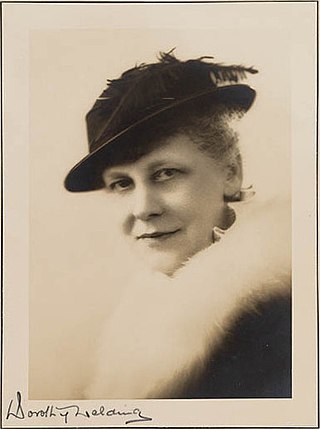
Florence Mary Taylor was the first qualified female architect in Australia. She was also the first woman in Australia to fly in a heavier-than-air craft in 1909 and the first female member of the UK's Institution of Structural Engineers in 1926. However, she is best known for her role as publisher, editor and writer for the influential building industry trade journals established in 1907 with her husband George, which she ran and expanded after his death in 1928 until her retirement in 1961.
Philip J. Goad is an Australian academic, currently serving as Professor of Architecture in the Faculty of Architecture, Building and Planning at the University of Melbourne. He is also a former President of the Victorian Chapter of the Royal Australian Institute of Architects. Phillip became Chair of the Heritage Council of Victoria in July 2021.
John Hamilton Andrews was an Australian architect, known for designing a number of acclaimed structures in Australia, Canada and the United States. He was Australia's first internationally recognised architect, and the 1980 RAIA Gold Medalist. He died peacefully in his hometown of Orange on 24 March 2022.
Margaret Leonie Edmond is an Australian architect.

Women in architecture have been documented for many centuries, as professional practitioners, educators and clients. Since architecture became organized as a profession in 1857, the number of women in architecture has been low. At the end of the 19th century, starting in Finland, certain schools of architecture in Europe began to admit women to their programmes of study. In 1980 M. Rosaria Piomelli, born in Italy, became the first woman to hold a deanship of any school of architecture in the United States, as Dean of the City College of New York School of Architecture. In recent years, women have begun to achieve wider recognition within the profession, however, the percentage receiving awards for their work remains low. As of 2023, 11.5% of Pritzker Prize Laureates have been female.
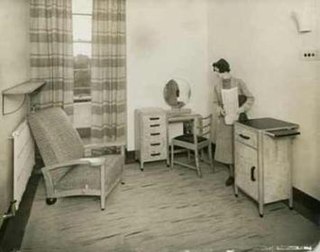
Mary Turner Shaw (1906–1990) was born in Caulfield, Melbourne, Australia. She is one of the first women to be employed as an architect in the early 1930s in Australia and thus pioneered new pathways for female architects. Her career is widely known for her working qualities that made her oversee many projects across Australia. She also became a distinct figure as an architectural historian, when she started publishing books and written articles. Her skills were diverse as she worked as a fashion designer, interior designer, project manager, public works architect and pioneer architectural librarian. As historian Geoffrey Serle described her, she was "a born writer and research historian with imagination, the ability to tell a story and define and ask fundamental questions".
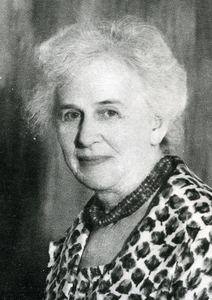
Ellice Maud Nosworthy was an Australian practising architect for approximately 50 years and graduated as one of Australia's first female architects in 1922.

Lily Isabel Maude Addison (1885–1968) was a female architect who practised in Queensland, Australia. She practiced at a time when very few women worked as architects.
Eva Buhrich (1915–1976) was a German architect and writer who fled Nazi Germany in the 1930s, emigrated to Australia and became a prominent architectural commentator.
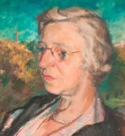
Eileen Mary Florence Good (1893–1986) was an Australian architect and educator. She was Australia's first female architectural academic and the University of Melbourne’s first female graduate of architecture.
Sandra Kaji-O'Grady is an architectural academic and educator based in Brisbane, Australia. She was Professor of Architecture, Dean and Head of the School of Architecture at the University of Queensland until 2018.
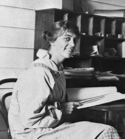
Beatrice May Hutton (1893–1990), also known as Bea Hutton was an Australian architect. On 30 October 1916, she became the first female to be accepted into an institute of architects in Australia. This followed the rejection of earlier female applicants, including Florence Taylor in 1907, on the grounds of being female.
Harriet Edquist is an Australian curator, and Professor of Architectural History in the School of Architecture and Design at RMIT University in Melbourne. Born and educated in Melbourne, she has both published widely on and created numerous exhibitions in the field of Australian architecture, art and design history. She also contributes to the production of Australian architectural knowledge as editor of the RMIT Design Archives Journal and is a member of the Design Research Institute at RMIT University.
Karen Burns is an architectural historian and theorist based in Melbourne, Australia. She is currently a senior lecturer in architecture at the Melbourne School of Design, University of Melbourne.
Gill (Gillian) Matthewson is a New Zealand architect, scholar and educator, based since 2016 at Monash University in Melbourne, Australia.
Naomi Stead is an architectural academic, scholar and critic, based in Melbourne, Australia. She is currently the Director of the Design and Creative Practice Enabling Capability Platform at RMIT University, Australia.

Neomy Storch is an Australian linguist. She is currently an associate professor of applied linguistics at the University of Melbourne, Australia. Her research focuses on second language acquisition with a special focus on second language writing. She is noted for her work on second language acquisition, collaborative writing, and academic writing.
Hannah Lewi is an architectural historian and educator based in the Melbourne School of Design at the University of Melbourne.
Parlour: women, equity, architecture is an organisation founded in 2012 as an advocacy group for gender equity in the architecture industry based in Australia. Part of the work of Parlour is to undertake research producing both quantitative and qualitative findings and to generating debate to expand 'the spaces for women in Australian architecture'.
References
- ↑ Rothenbury, Camryn (12 July 2018). "Professor Julie Willis - Melbourne School of Design". Melbourne School of Design. Retrieved 31 August 2018.
- ↑ "PROF Julie Willis - The University of Melbourne". www.findanexpert.unimelb.edu.au. Retrieved 31 August 2018.
- 1 2 "New Dean for Faculty of Architecture, Building & Planning". The Melbourne Newsroom. Retrieved 31 August 2018.
- ↑ "Fabrications - SAHANZ". SAHANZ. Retrieved 31 August 2018.
- ↑ "Architectural Theory Review". www.tandfonline.com. Retrieved 31 August 2018.
- ↑ "Contributor: Julie Willis | ArchitectureAU". architectureau.com. Retrieved 31 August 2018.
- ↑ "Parlour - women, equity, architecture". Parlour. Retrieved 31 August 2018.
- ↑ Goad, Philip; Willis, Julie (2012). The Encyclopedia of Australian architecture. Port Melbourne, Vic. : Cambridge University Press. ISBN 9780521888578.
- ↑ "The Encyclopedia of Australian Architecture | 2011 - Docomomo Australia". Docomomo Australia. 3 December 2011. Retrieved 31 August 2018.
- ↑ "Bates Smart Award for Architecture in the Media". ArchitectureAU. Retrieved 11 September 2018.
- ↑ "PROF Julie Willis - The University of Melbourne". www.findanexpert.unimelb.edu.au. Retrieved 31 August 2018.
- ↑ Willis, Julie; Goad, Philip; Logan, Cameron. "Architecture and the Modern Hospital: Nosokomeion to Hygeia (Hardback) - Routledge". Routledge.com. Retrieved 31 August 2018.
- ↑ Willis, Julie; Hanna, Bronwyn (2002). Women Architects in Australia: 1900–1950. Canberra: Royal Australian Institute of Architects.
- ↑ Willis, Julie (7 September 2017). "Flexibility a winning formula - Parlour". Parlour. Retrieved 31 August 2018.
- ↑ Willis, Julie (17 November 2014). "Not just a "women's problem" - Parlour". Parlour. Retrieved 31 August 2018.
- ↑ Willis, Julie (19 July 2016). "Designing for wellbeing: realising benefits for patients through best practice hospital design : Research". Research. Retrieved 31 August 2018.